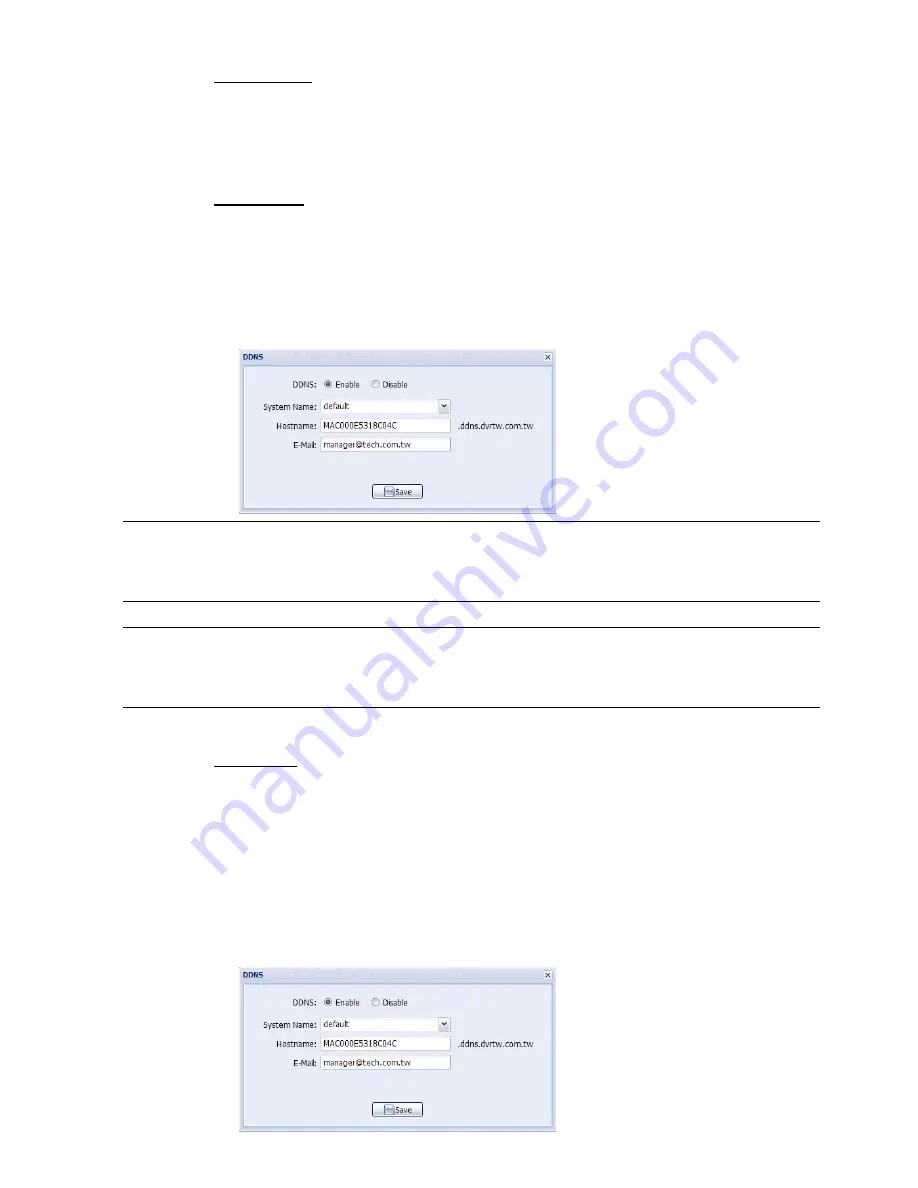
10
For Static IP:
a) Enter the information of “Server IP”, “Gateway” and “Net Mask” obtained from your ISP
(Internet Service Provider).
b) Enter the port number. The valid number ranges from 1 to 9999. The default value is 80.
Typically, the TCP port used by HTTP is 80. However in some cases, it is better to change
this port number for added flexibility or security.
For PPPoE:
a) Enter the user name and password obtained from your ISP.
b) Continue the DDNS setting by clicking the “DDNS” button, as reminded in this page.
- Select “default” in “System Name”.
- In “Hostname”, keep the default value, i.e. the MAC address of this camera. Then, note
down the whole address of the camera, for example,
MAC000E5318C04C.ddns.dvrtw.com.tw.
- (Optional) Enter your email address to receive messages from the DDNS server.
Note:
Please at least use the default address to access your DVR remotely once.
This is to ensure our DDNS server has your DVR registered. Then, you may
change the host name to a more meaningful name to memorize later here.
Note:
You can also create a DDNS account from a website which provides free
DDNS service. For details, please refer to “APPENDIX 1 CREATING AN
ACCOUNT FOR DDNS SERVICE” at page 12.
c) Select “Save” and return to the wizard.
For DHCP:
a) Before selecting this option, you need to finish the DHCP router settings first.
Get a router and connect it to the Internet via your computer (with Static IP or PPPoE setting).
There are different setting methods for different routers. Please refer to their respective user
manuals.
d) Continue the DDNS setting by clicking the “DDNS” button, as reminded in this page.
- Select “default” in “System Name”.
- In “Hostname”, keep the default value, i.e. the MAC address of this camera. Then, note
down the whole address of the camera, for example,
MAC000E5318C04C.ddns.dvrtw.com.tw.
- (Optional) Enter your email address to receive messages from the DDNS server.




























